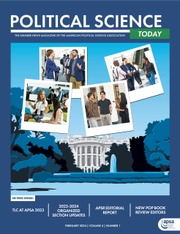On August 25, 2022 the White House Office of Science and Technology Policy (OSTP) sent a memo to executive departments and agencies asking agencies to update public access policies to “make publications and their supporting data resulting from federally funded research publicly accessible without an embargo on their free and public release.” The memo updates and expands upon the 2013 Holdren memo, which included an optional 12-month embargo for publications.
The memorandum left open many questions about implementation costs.The leaders of the House Science Committee, Chairwoman Rep. Eddie Bernice Johnson and Ranking Member Rep. Frank Lucas, enumerated many of those questions in a September letter to OSTP.
Agencies face a tight turnaround to provide their initial plans to OSTP by February 21, 2023. In a public town hall, National Science Foundation staff stressed that the plans submitted at that point will not be the final implementation plan but rather a jumping off point for further feedback and comment.
IS THIS THE SAME AS “OPEN ACCESS?”
Not necessarily. While Open Access is inherently public, “public access” can take many forms. The most common standard accepted by US Government agencies today is Green OA (i.e., the posting of the Author Accepted Manuscript or AAM in an institutional repository). Open Access licenses, the most common of which is CC BY 4.0, allow for reuse of the work. Indications at this point indicate that government agencies will not have a reuse requirement in the way Plan S requires in Europe.
WILL THE COST OF PUBLISHING COME OUT OF MY AWARD FUNDS?
As the mandate is for public access and not Open Access, it is currently an unfunded mandate and is likely only to require that the authors post their accepted manuscript on an acceptable repository. That said, authors could include a line in their grant proposal for an Article Processing Charge (APC) for their journal publication to make it Gold OA.
Additionally, for APSA journals, our main publishing partner, Cambridge University Press, has signed “Read & Publish” or Transformative Agreements with many university libraries around the world (including as of this writing, 300 in the United States). If a corresponding author resides at that university, most or all of their APC is likely covered by their institution. To see if your library is a part of a Transformative Agreement head to: https://www.cambridge.org/core/services/open-access-policies/read-and-publish-agreements

WHAT WILL COMPLIANCE FOR RESEARCHERS LOOK LIKE? WHO IS RESPONSIBLE?
Authors will likely be able to comply with the mandate, which will be implemented no later than December 31, 2025, if they post their Author Accepted Manuscript in an institutional repository that is recognized by their funding agency. Some agencies may implement zero embargo sooner, which would then apply to grants awarded after that date.
A research grant from a US Government Agency to a PI is a grant to their university, and it is usually that institution that is responsible for the PI’s compliance with the terms of that grant.
WHAT DOES THIS MEAN FOR APSA JOURNALS?
As of press time, roughly 50% of the articles in the American Political Science Review have been published as Open Access largely through Cambridge’s Transformative Agreements with libraries and the percentage of open content of our other titles and section journals continues to grow at a rapid rate as more libraries sign on to these agreements. Also, APSA journals already permit authors to deposit the Author Accepted Manuscript in a non-profit institutional repository with zero embargo.
WHAT HAPPENS NEXT?
After OSTP reviews the agencies’ submitted plans, agencies will likely release those plans for public comment. APSA will update members on these developments. In the meantime, members interested in providing input for the NSF’s plans may submit questions, comments, and concerns to [email protected].


